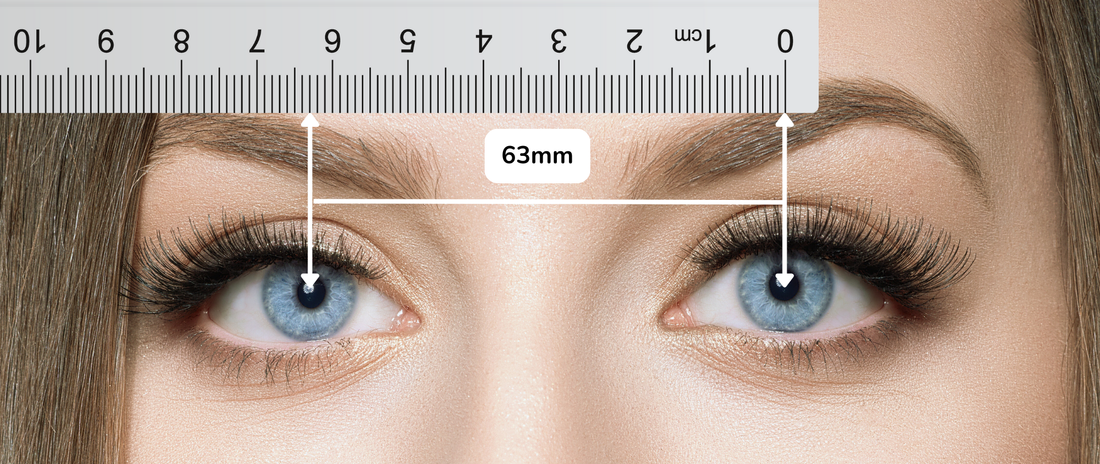
How to Measure Your Pupillary Distance (PD) at Home
When ordering prescription glasses online, one crucial measurement often overlooked is Pupillary Distance (PD). This measurement ensures that your lenses align perfectly with your pupils, providing clear, comfortable vision. If your PD isn’t measured correctly, your lenses may cause discomfort, headaches, or blurry vision. While an optometrist can measure PD, you can also do it yourself at home with just a few simple tools. Here’s how!

What is Pupillary Distance (PD)?
PD is the distance (in millimeters) between the centers of your pupils. It’s essential because it determines the optical center of your lenses—where you look through your glasses. A correct PD measurement ensures that your lenses provide the most accurate vision correction possible.
Types of PD Measurements:
- Single PD: A single number representing the total distance between both pupils.
- Dual PD: Two numbers indicating the distance from each pupil to the center of the nose (e.g., 32/33mm).
If your prescription doesn’t include PD, you can ask your optometrist or follow these easy steps to measure it yourself!
How to Measure Your PD: Step-by-Step Guide
Method 1: Measuring with a Mirror
What You’ll Need:
✔ A mirror
✔ A ruler (preferably millimeter-marked)
✔ A steady hand
- Stand about 30cm (12 inches) from the mirror in a well-lit room.
- Hold the ruler against your forehead or directly above your eyes.
- Close your right eye and align the ruler’s zero mark with the center of your left pupil.
- Close your left eye and open your right eye, noting the measurement where your right pupil aligns.
- The number you see is your PD! Repeat a few times to ensure accuracy.
Method 2: Measuring with a Friend
What You’ll Need:
✔ A friend or family member
✔ A ruler (millimeter-marked)
✔ Good lighting
- Sit facing your friend at eye level.
- Have them hold the ruler across your eyes, aligning the zero mark with the center of one pupil.
- Ask them to measure the distance between the centers of both pupils.
- Double-check the measurement for accuracy.
Tips for Accurate PD Measurement
✔ Measure a few times to ensure consistency.
✔ Keep your head straight and look directly ahead.
✔ If you wear glasses, take them off before measuring.
✔ For bifocals or progressives, your near and far PD may differ—check with your optometrist.
Why PD Matters for Your Glasses
PD is crucial for centering your lenses correctly. An incorrect PD can cause:
- Eye strain and fatigue
- Blurry or distorted vision
- Discomfort when wearing your glasses
Ensuring an accurate PD helps you enjoy clear vision and a comfortable fit when purchasing glasses online. If you’re unsure about your measurement, don’t hesitate to ask your optometrist!
Now that you know how to measure your PD, you’re ready to shop for your perfect pair of prescription glasses! Browse our collection of stylish eyewear and find frames that match both your prescription and personal style.



